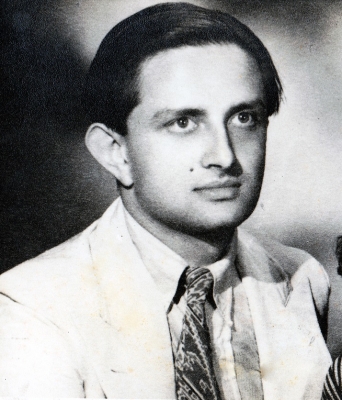
The trumpets were silenced, hearts were broken and disappointment reigned when the Indian Space Research Organization (ISRO) lost contact with the Vikram lander, just moments before its scheduled touchdown on the lunar surface. The words “Vikram, Do you copy?” echoed throughout the world, but the lander remained silent. While the ISRO could not re-establish communication, there is no denying that the Chandrayaan-2 mission was phenomenally exciting? If India has made significant strides in space exploration, it was thanks to the vision of one man, Dr. Vikram Sarabhai. Knowing the importance of a space programme for the country, it was he who helped set up INCOPSA way back in 1962.
Down-to-earth
Born in a renowned industrialist family of Ahmedabad in Gujarat on August 12, 1919, Sarabhai had a privileged childhood. But his parents, Ambalal and Sarla Devi, ensured that he remained grounded and in touch with his roots. Actively taking part in India’s Independence movement, they served as stellar role models for the young Sarabhai. Regular interactions with the likes of Rabindranath Tagore, Jawaharlal Nehru, Sarojini Naidu and Mahatma Gandhi, who were Sarabhai’s personality. He imbibed the values of hardwork, social responsibility and, above all generosity from them.
Love for science
From a young age, Sarabhai evinced a keen interest in science and mathematics. Impressed by his constant tinkering with machines, his father set up a workshop where Sarabhai was free to experiment.
Sarabhai graduated from Gujarat College and pursued further studies at St. John’s College, Cambridge University. Where he received the prestigious trips in National Sciences in 1940. The tripos framework includes a wide range of natural sciences from physical sciences to biology which are taught alongside the history and philosophy of science.
As World War II escalated, Sarabhai returned to India. He joined the Indian Institute of Science (IISc) and obtained special permission to complete his research on cosmic rays under the reputed physicist Sir C.V. Raman in Bengaluru. Sarabhai’s first scientific paper Time Distribution of Cosmic Rays, was published in 1942. In 1945, he returned to Cambridge for a docorate.
Sensing the need for better scientific facilities in India, Sarabhai convinced the Charitable trusts controlled by his family to establish the Physical Research laboratory (PRL.) Ahmedabad. He was just 28 then. From this small start, began his long, illustrious journey to build India’s space programme.
Shooting for the stars
After Russia launched its rocket Sputnik, Sarabhai convinced the Indian government of the importance of investing into a space programme. He set up the Indian National Committee for Space Research (INCOPSAR) which later grew and became the ISRO in 1969. Today, the ISRO is the world’s largest government space agency.
With support from Dr. Homi Bhabha widely regarded as the father of India’s nuclear science programme, Sarabhai set up the first rocket launching station TERLS (Thumba quatorial Rocket Launching Station)( centre at Thumba near Thiruvanathapuram, a location close to the magnetic equator. Sarabhai’s achievements earned him the Padma Bhushan, the third highest civilian award. After Homi Bhaba’s death, Sarabhai took over as the chairperson of the Atomic energy Commission. Taking up the work passionately, he helped set up many nuclear plants across the country. He also played a key role in developing indigenous nuclear technology for defence. He was committed to the peaceful use of nuclear energy. He was also concerned about the implications of the technology falling into wrong hands.
Visionary
Sarabhai had a vision to use science and technology for development. With programmes to take education to remote villages via satellites, he brought about a communication revolution. He also contributed towards the satellite-based remote sensing of natural resources. But Sarabhai’s vision was not restricted to science. Realizing the need for management education in India, he establishment the Indian Institute of Management in Ahemdabad (IIM-A). To promote visual and performing arts, he set up the National Institute of Design (NID) and Darpan Academy for Performing Arts.
Death came to Sarabhai in 1971 at his favourite resort on Kovalam beach, after he had witnessed the launch of a Russian rocket and inaugurated Thumba railway station earlier that day.
Picture Credit : Google




